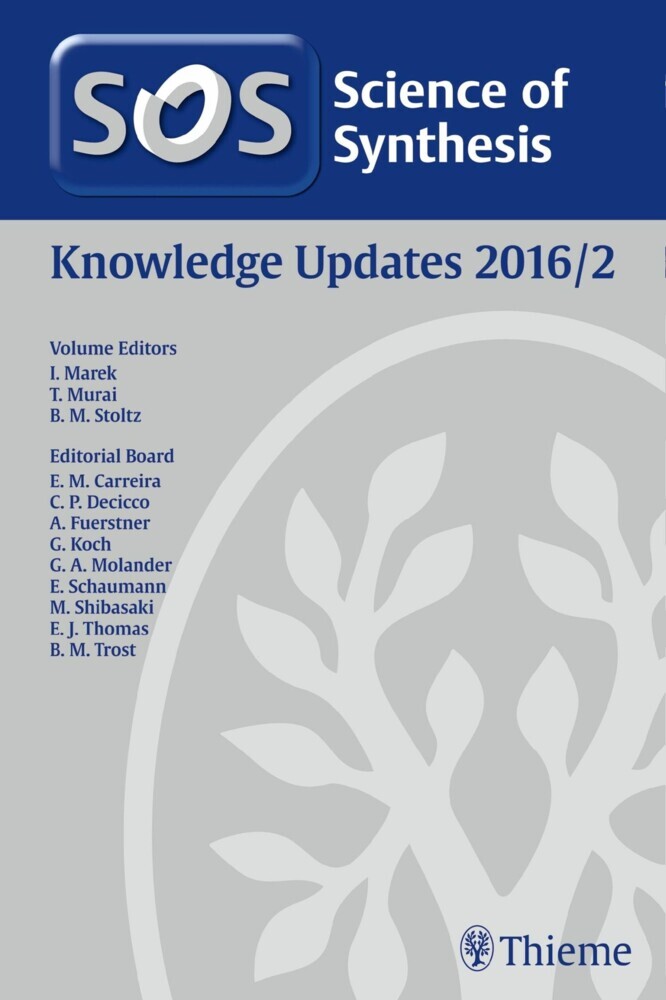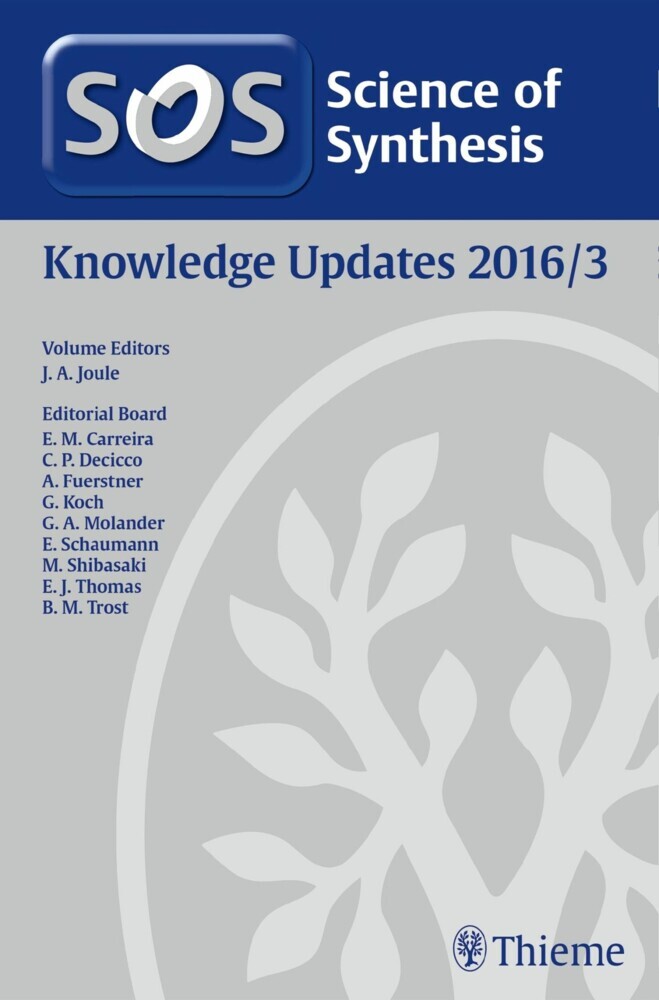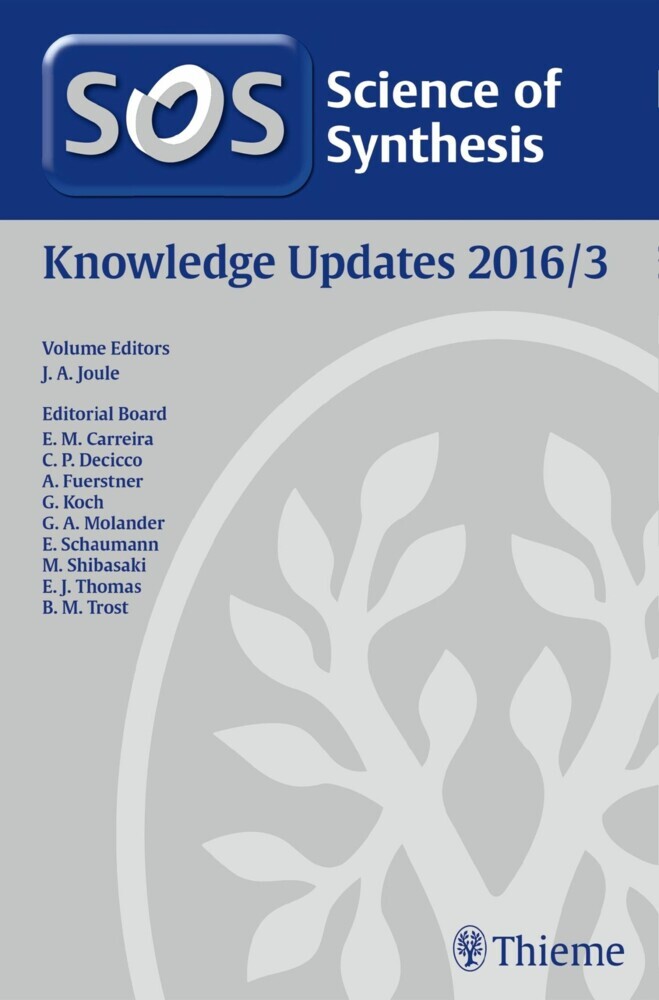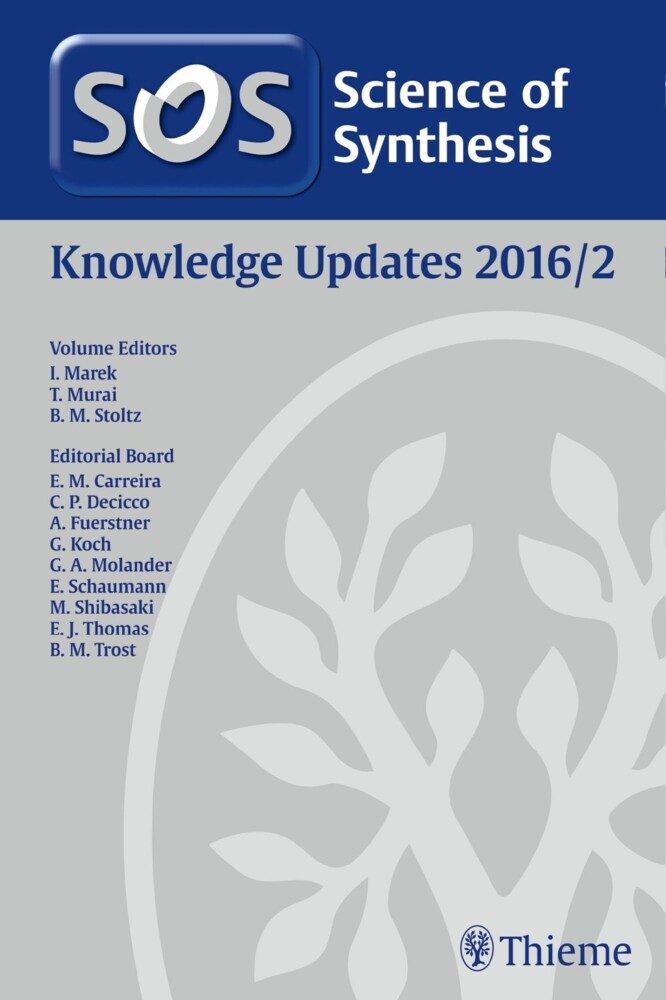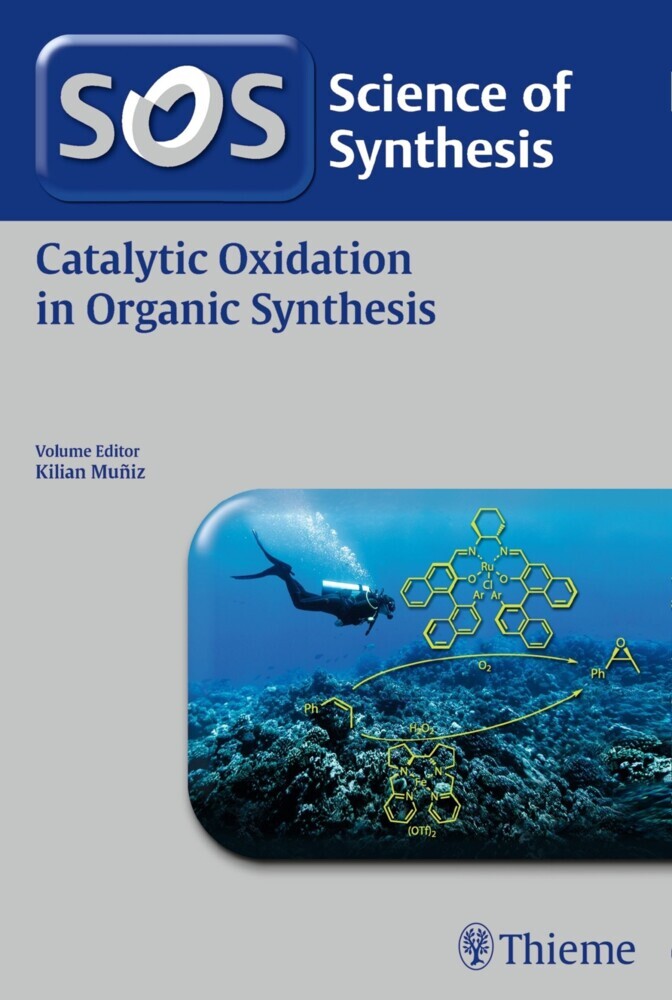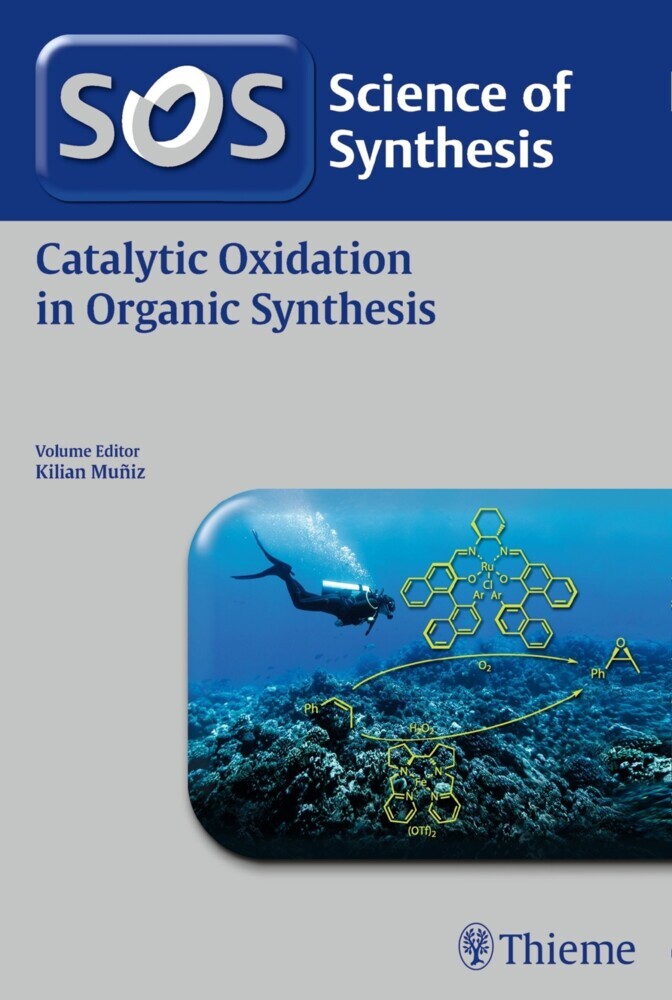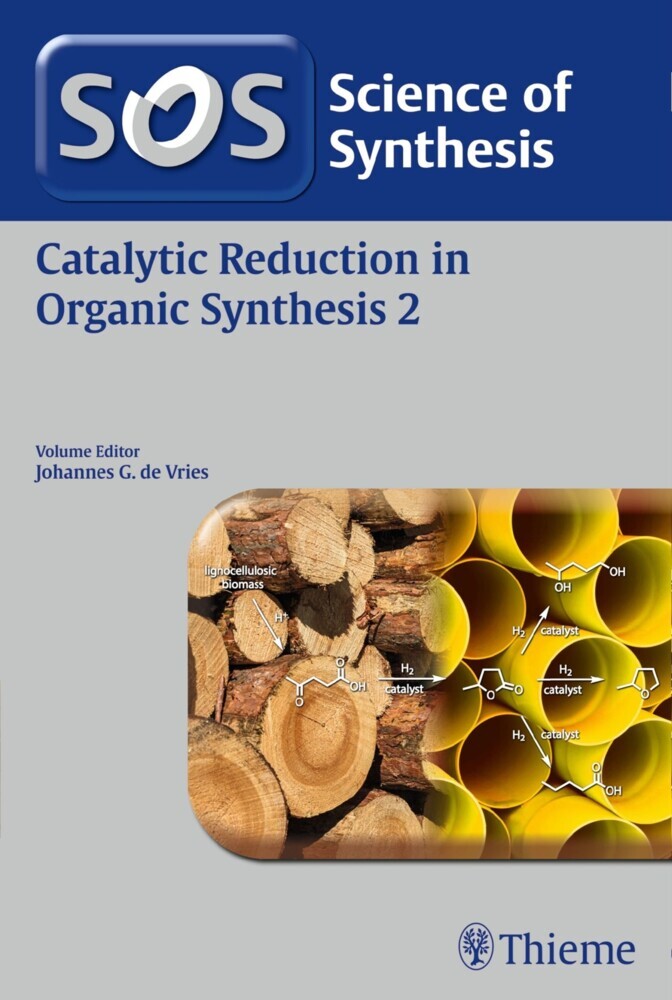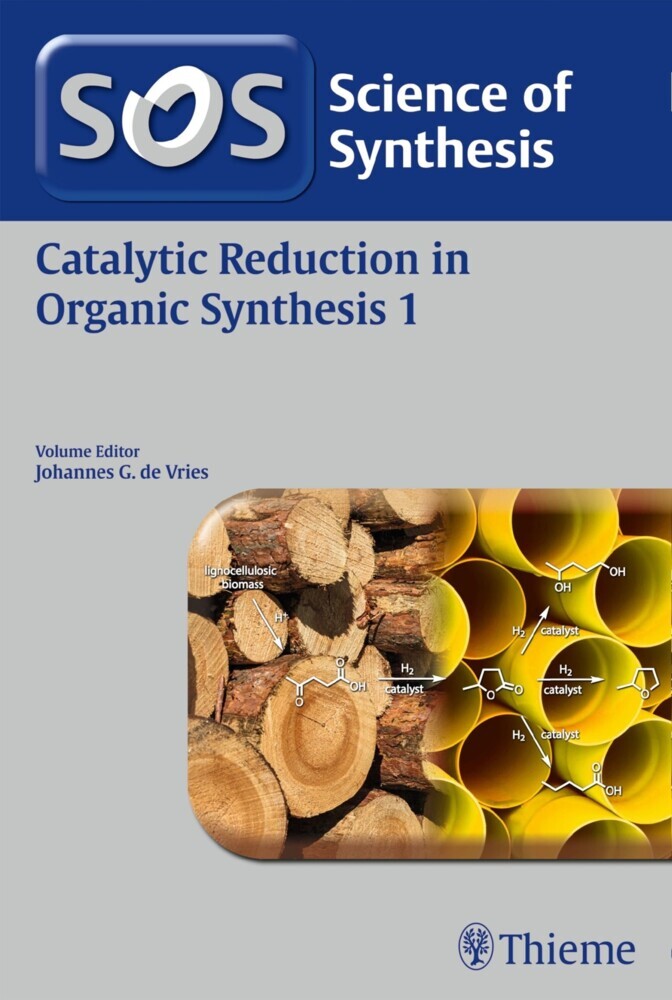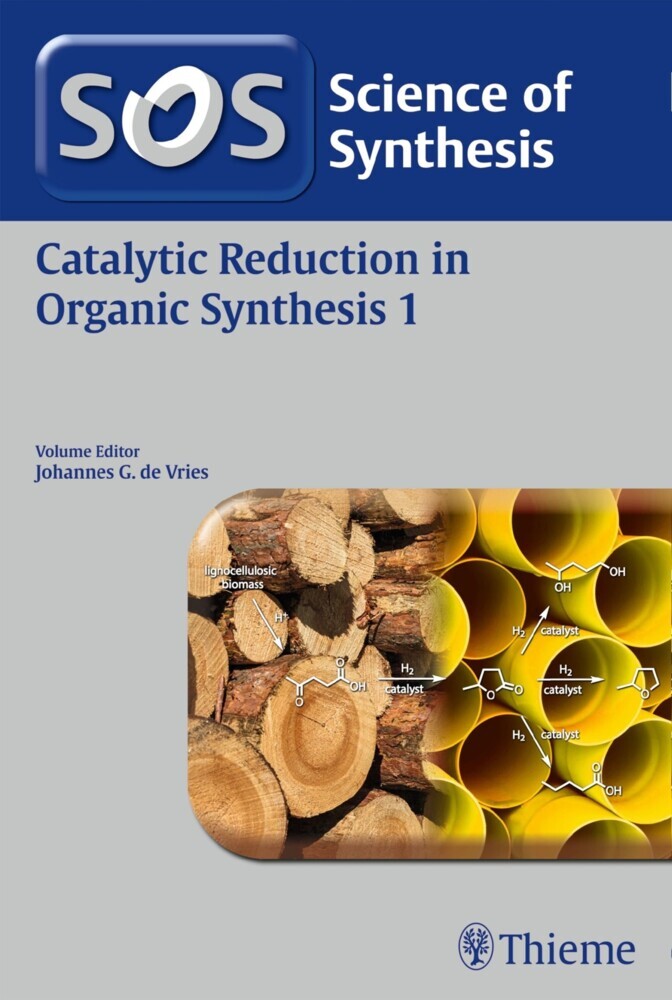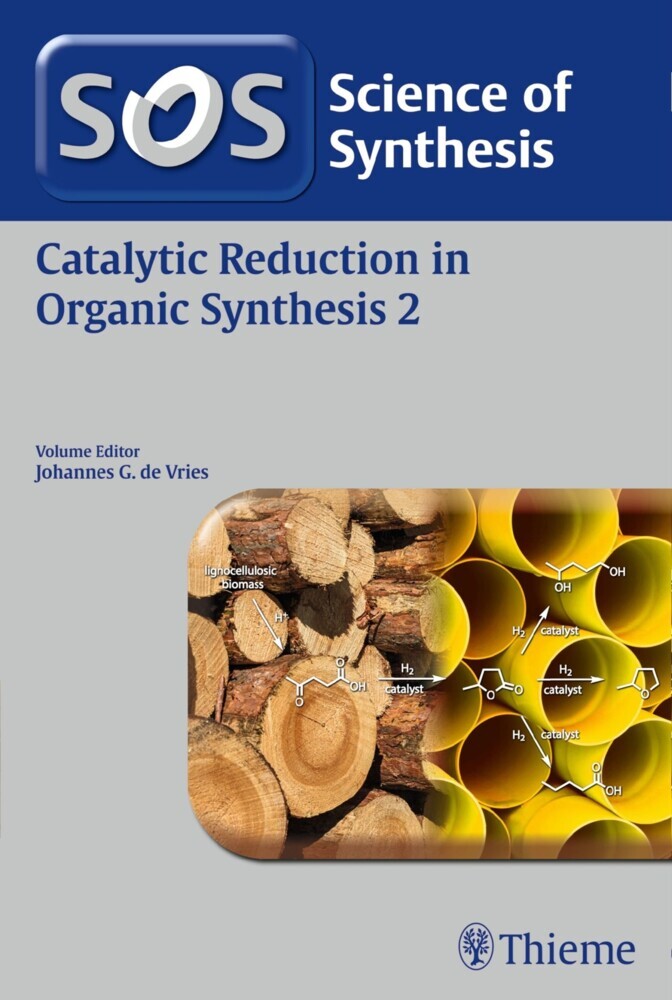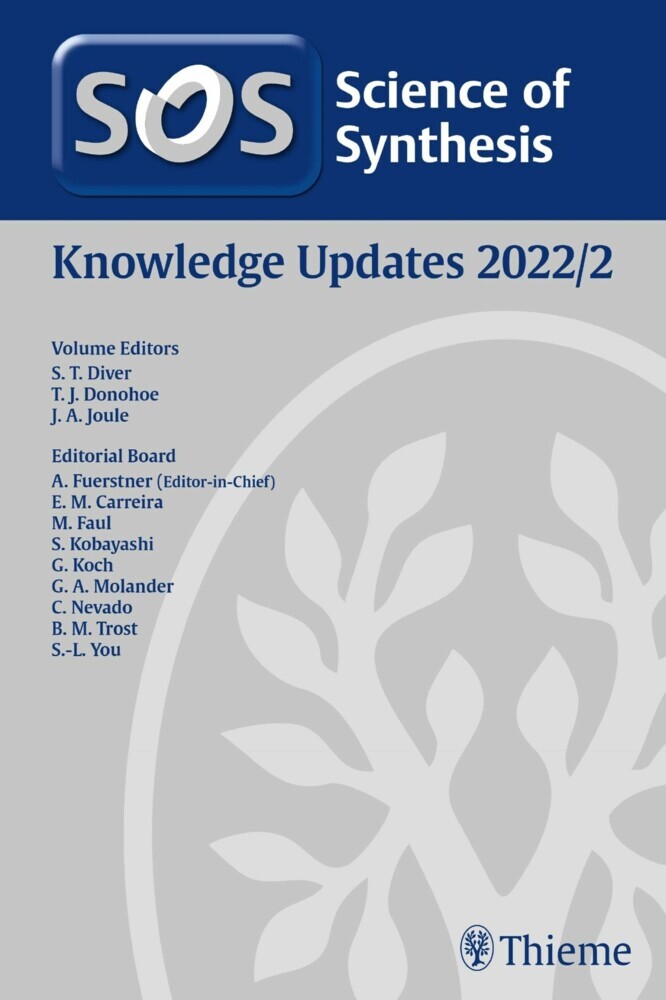Science of Synthesis Knowledge Updates: 2016/2
The Science of Synthesis Editorial Board, together with the volume editors and authors, is constantly reviewing the whole field of synthetic organic chemistry as presented in Science of Synthesis and evaluating significant developments in synthetic methodology. Several annual volumes updating content across all categories ensure that you always have access to state-of-the-art synthetic methodology.
1;Science of Synthesis: Knowledge Updates 2016/2;1 2;Title Page;6 3;Copyright;8 4;Preface;9 5;Abstracts;11 6;Science of Synthesis Knowledge Updates 2016/2;19 7;Table of Contents;21 8;1.2.7 Radical-Based Palladium-Catalyzed Bond Constructions;35 8.1;1.2.7.1 Method 1: Reactions Involving Palladium(I) Species;35 8.1.1;1.2.7.1.1 Variation 1: Synthesis of Organometallic Palladium(I) Complexes;35 8.1.2;1.2.7.1.2 Variation 2: Reactions Involving Palladium(I) Precatalysts;42 8.1.3;1.2.7.1.3 Variation 3: Cross-Coupling Reactions;50 8.1.4;1.2.7.1.4 Variation 4: Carbonylation Reactions;61 8.1.5;1.2.7.1.5 Variation 5: Cyclization Reactions;76 8.1.6;1.2.7.1.6 Variation 6: Atom-Transfer Reactions;82 8.2;1.2.7.2 Method 2: Reactions Involving Palladium(III) Species;96 8.2.1;1.2.7.2.1 Variation 1: Synthesis of Organometallic Palladium(III) Complexes;96 8.2.2;1.2.7.2.2 Variation 2: C-H Activation Reactions Involving Palladium(III);106 8.2.3;1.2.7.2.3 Variation 3: C-F Bond-Constructing Reactions Involving Palladium(III);113 8.2.4;1.2.7.2.4 Variation 4: Reactions Involving Phenyl or Benzoyl Radicals;116 8.2.5;1.2.7.2.5 Variation 5: Asymmetric Aza-Claisen Rearrangements;126 8.3;1.2.7.3 Method 3: Reactions Involving Palladium(I) and Palladium(III) Species;129 8.4;1.2.7.4 Method 4: Miscellaneous Reactions;132 9;2.11.15 C(sp3)-H Functionalization by Allylic C-H Activation of Zirconocene Complexes;147 9.1;2.11.15.1 Method 1: Synthesis of Conjugated Dienes from Nonconjugated Dienes;152 9.1.1;2.11.15.1.1 Variation 1: From Nonheteroatom-Substituted Alkenes;152 9.1.2;2.11.15.1.2 Variation 2: From Nonconjugated Dienes Bearing an Alkoxy Substituent;153 9.2;2.11.15.2 Method 2: Synthesis of Trienes;156 9.3;2.11.15.3 Method 3: Synthesis of Homoallylic Alcohols;157 9.3.1;2.11.15.3.1 Variation 1: From Acid Chlorides without Ligand Exchange;157 9.3.2;2.11.15.3.2 Variation 2: From Acid Chlorides with Ligand Exchange;158 9.3.3;2.11.15.3.3 Variation 3: From Aldehydes without Ligand Exchange;160 9.3.4;2.11.15.3.4 Variation 4: From Aldehydes with Ligand Exchange;162 9.4;2.11.15.4 Method 4: Diastereoselective Synthesis of Homoallylic Amines;163 9.5;2.11.15.5 Method 5: Diastereoselective Synthesis of 1,4-Homoallylic Diols;164 9.5.1;2.11.15.5.1 Variation 1: From Grignard Reagents;164 9.5.2;2.11.15.5.2 Variation 2: From Terminal Alkenes;166 9.6;2.11.15.6 Method 6: Synthesis of 1,2-Disubstituted Cyclopropanols;167 9.7;2.11.15.7 Method 7: Synthesis of Substituted Allylic Derivatives from Unsaturated Fatty Alcohols;167 9.8;2.11.15.8 Method 8: Selective Reduction of the Double Bond of ?-Ene Dihydrofurans and Dihydropyrans;169 9.9;2.11.15.9 Method 9: Synthesis of Acyclic Fragments Possessing an All-Carbon Quaternary Stereogenic Center;170 9.9.1;2.11.15.9.1 Variation 1: From ?-Ene Cyclopropanes;170 9.9.2;2.11.15.9.2 Variation 2: From Alkylidenecyclopropanes;173 9.9.3;2.11.15.9.3 Variation 3: From ?-Alkenylcyclopropanes Bearing a Leaving Group;176 10;2.11.16 Synthesis and Reactivity of Heteroatom-Substituted Vinylzirconocene Derivatives and Hetarylzirconocenes;181 10.1;2.11.16.1 General Preparation of Vinylzirconocene Derivatives;182 10.2;2.11.16.2 General Reactivity of Vinylzirconocene Derivatives;184 10.3;2.11.16.3 Preparation of Vinylzirconocene Derivatives from Heteroatom-Substituted Alkenes;185 10.3.1;2.11.16.3.1 Method 1: From Alkenyl Halides;186 10.3.2;2.11.16.3.2 Method 2: From Aryl Halides;188 10.3.3;2.11.16.3.3 Method 3: From Enol Sulfonates;192 10.3.4;2.11.16.3.4 Method 4: From Enol Ethers and Silyl Enol Ethers;194 10.3.5;2.11.16.3.5 Method 5: From Sulfides, Sulfoxides, and Sulfones;196 10.3.6;2.11.16.3.6 Method 6: From Carbamates;200 10.3.7;2.11.16.3.7 Method 7: From Dienyl Systems;202 11;2.12.17 The Role of Solvents and Additives in Reactions of Samarium(II) Iodide and Related Reductants;211 11.1;2.12.17.1 Synthesis of Samarium(II) Reductants;211 11.1.1;2.12.17.1.1 Samarium(II) Iodide;212 11.1.1.1;2.12.17.1.1.1 Method 1: Synthesis in Tetrahydrofuran from Samarium an
Marek, Ilan
| ISBN | 9783132209015 |
|---|---|
| Artikelnummer | 9783132209015 |
| Medientyp | E-Book - ePUB |
| Copyrightjahr | 2016 |
| Verlag | Georg Thieme Verlag KG |
| Umfang | 514 Seiten |
| Sprache | Englisch |
| Kopierschutz | Digitales Wasserzeichen |

